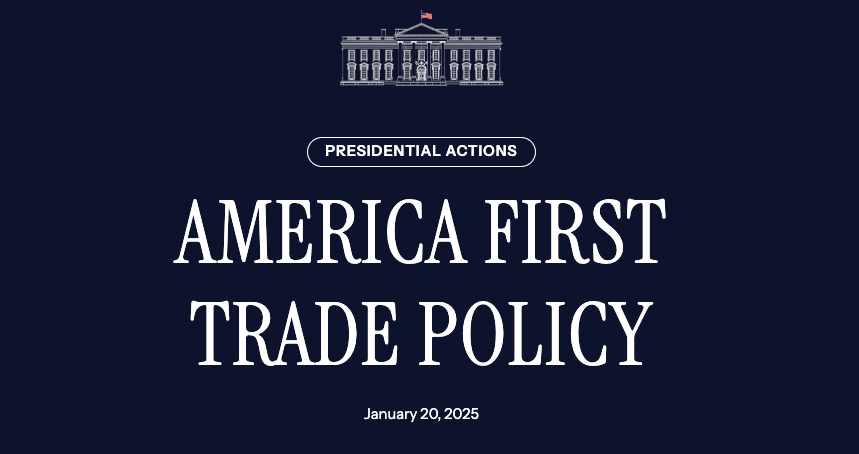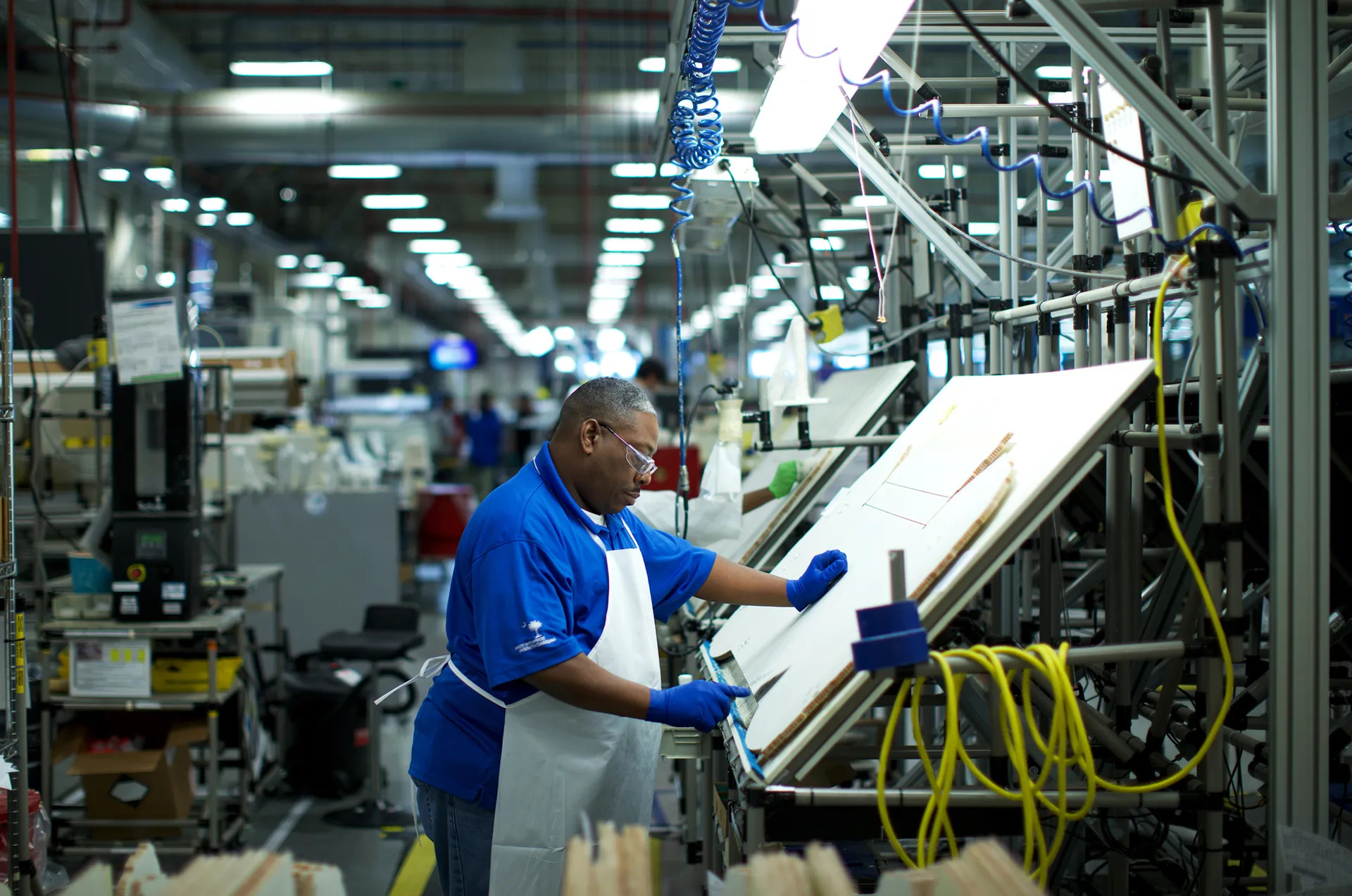Trump’s ‘America First’ protectionist tactics are supposed to create advantages for the U.S. in trade and freeze out China in theory, but expect that the world needs America’s consumers to continue. New connections forming amid the trade war could mean instead, the U.S. is left out in the cold.

On January 20, 2025, President Trump published a memorandum (memo) introducing the America First Trade Policy as a strategy designed to reshape U.S. trade relationships and address long-standing trade challenges.
A relatively clear strategy – or tactical bent – has emerged from Washington in its international trade negotiations.
Whilst securing a reduction in trade deficits continues to be a much-touted objective in the U.S. trade team’s approach to its counterparts, an equally prominent objective appears to be the isolating of China, and the enforcement of a supply chain cordon sanitaire against the global manufacturing powerhouse.
These adjustments also reflect the fruits of labour of more technocratically minded and policy-oriented members of Trump’s team – including Treasury Secretary Scott Bessent, a sturdy pair of hands, and the largely implementation-oriented Trade Representative Jamieson Greer. Whilst neither Bessent nor Greer counts amongst the confidantes that Trump looks towards for strategic advice, they have proven to be skilful prosecutors of the ongoing campaign against Beijing.
The Extent and Limits of Washington’s Initial Successes
At face value, the Trump administration’s push appears to have paid off.
The trade deal struck between Washington and London on May 8th – the first amongst all major trading partners to the U.S. – included a clause that bound the UK to “work to promptly meet U.S. requirements” on supply chain security and “ownership of relevant production facilities” in strategically sensitive facilities. Pledging deepening ties over export controls and restricting China’s access to cutting-edge, dual-use tech components, the agreement foreshadowed the same playbook adopted with other negotiation counterparts: “Work with us to contain China’s export edge, and we will duly reward you with market access.”
Early on this month, Hanoi reportedly “agreed” to 20% U.S. tariffs on goods manufactured and produced primarily in Vietnam, though “transhipped goods” would face a 40% levy.
Transshipment refers broadly to all forms of re-assembling, re-packaging, and re-exporting of imported goods through an intermediary nation, prior to their re-exports abroad. This practice has proven vital for Chinese exporters seeking to circumvent American tariffs since the Sino-American trade war broke out in 2018, with Chinese manufacturers exporting already-built components to be assembled in countries such as Vietnam, Malaysia, and Indonesia, prior to their subsequent transportation to the U.S..
On July 15th, Jakarta and Washington arrived at a deal that reduced U.S. tariffs from 32% to 19% for all Indonesia-made goods, whilst transhipped goods would face tariffs at the rate of their original source countries. Trade bureaucrats in Jakarta reportedly breathed a sigh of relief – in contrast to some of their counterparts across other parts of ASEAN. So, too, did their counterparts in Washington, who had been toiling away in securing concessions amidst deteriorating sentiments in the European Union (EU) and ASEAN towards the U.S..
Yet such jubilation was not necessarily shared by many others.
Additionally, over 100 days have elapsed since Trump unveiled – dramatically as always – his 90-day pause on the “reciprocal” tariffs in early April, which wreaked havoc on the U.S. stock and bond markets. Having suffered a bruising setback in the Upper House elections, Shigeru Ishiba’s government was extremely eager to acquiesce to a “good deal” with his country’s major trade partner. The Philippines was the third ASEAN country to have tentatively locked a trade deal with Trump. The numbers are slowly picking up.
This handful of agreements are a far cry from the triumphant clean sweep that Trump boasted of his capability to accomplish with ease – at the start of the now-extended window for trade negotiations. Indeed, Trump must contend with a world where his counterparts are increasingly undeterred by his bluff. Brussels, having pushed back substantively on the tariffs, is reportedly on track to achieving a deal with Washington.
Elsewhere, from Mexico City, Ottawa, to Beijing, there are few deals in sight between the US and some of its largest trading partners – as of yet.

U.S. President Trump has unveiled a new executive order, titled “Buy American and Hire American,” but in the modern economy that’s almost impossible to do. (Photo: TRAVIS DOVE / BLOOMBERG / GETTY)
The Medium- and Long-term Prognosis of the Encirclement Campaign
For the US, aligning countries with the zealously protectionist economic vision advanced by Trump could prove challenging; getting them on board in cracking down on re-exporting from China – an integral component of their economic growth strategies – is an order of magnitude more difficult. Undergirding such difficulty are three distinctive reasons, which are also indicative of why the trade encirclement strategy is likely to fail to a significant extent.
Firstly, proposed transhipment tariffs are hard to specify, and even harder to enforce properly. As always, the Devil lies in the details – of which there is unsurprisingly very little when it comes to how, whom, and by what metrics of measurements or evaluation these extra tariffs will be enforced. The crux of the matter often boils down to fine-grained footnotes to rules of origins, which stipulate the threshold percentages of value-adding transformation required for some goods to be deemed “produce in X” in part or in full. Thus far, limited information has emerged from the bilateral discussion between Washington and Hanoi – beyond official internal documents pledging that Vietnam will comply with crackdown on “illegal transhipments”.
If “transhipped goods” are to refer to purely goods that are re-labelled, re-packaged, and shipped abroad to the U.S. – often performed by Chinese-owned companies themselves – then the U.S. could find itself with limited recourses in the face of these companies legally dissolving and re-building their operations through clever manoeuvring around the sprawling bureaucracy.
On the other hand, as analyst Le Hong Hiep identified in relation to Vietnam, should Washington adopt a much broader interpretation of transhipped goods, targeting all products made in Vietnam that contain inputs and components from China, this could prove highly destructive towards the profit margins of Vietnamese firms in the electronics and textiles sectors. On grounds of national sovereignty and diversification of economic ties, Hanoi would have every right and reason to refuse excessively interventionist attempts by USTR to enforce said stipulations.
Secondly, Trump’s encirclement campaign has only reinforced convictions by states in regional and mini-lateral blocs to double down on trade integration with their partner economies. As my colleague and Northeast Asia security expert Zhang Yun has noted, “regional reintegration across Asia and Europe is unfolding.”
Singaporean Foreign Minister Vivian Balakrishnan spoke to such shifting sentiments at the recently concluded Foreign Ministers’ Meeting in Kuala Lumpur, where he called for making ASEAN “a single production zone, a single investment zone”, with further reductions in “tariff barriers [and] non-tariff barriers as well.”
Ties are also starting to deepen between blocs. On June 26th, EU Commission President Ursula von der Leyen raised the thought of linking the EU with the 12-nation Comprehensive and Progressive Trans-Pacific Partnership (CPTPP). The implicit thought is that the EU must diversify beyond merely infra-bloc integration and both China and the US, and develop synergies with both developed economies, such as Canada, the UK, Singapore, New Zealand, and Australia, and high-potential emerging economies, such as Vietnam, Mexico, and Chile.
The upshot of such infra-bloc and inter-bloc integration is clear – the more alternatives there are to the American markets for producers in these economies, the less substantial the leverage Washington wields against these economies. Correspondingly, the likelier it would be for them to push back against unilateral demands by American officials that they refrain from trading with China – which remains an integral component of the diversification efforts of many economies, especially in Continental Europe and Latin America.
Thirdly and finally, U.S. pressures could well be lending credibility and traction to technocrats within the Chinese state, who have long called for the propping-up of domestic consumption and expansion of the Chinese market for overseas producers. At Summer Davos in June this year, Premier Li Qiang hit all the right notes by pledging that China will become a “mega-sized” consumption power, doubling down on household spending in order to overcome growth bottlenecks and rebalance the economy.
What is unique about this occasion, perhaps, is the unambiguous clarity with which the message is articulated, as well as the rank seniority of the speaker; Li Qiang ranks nominally 2nd on the Politburo Standing Committee of the Communist Party of China.
Additionally, the speech is also capping off a spate of policy statements heralding a subtle yet important shift in the Chinese leadership’s priorities since last summer – more consumption, and less inefficient industrial policymaking, which Chinese President Xi Jinping has vocally rebuked in recent weeks.
The more quickly the Chinese market grows – through empowering its emerging middle class – the narrower the gap between the U.S. and China when it comes to global market shares across different sectors. Indeed, Chinese leaders are coming to the realisation that manufacturing capacity is not the only decisive element in great power economic rivalry – one’s purchasing power, or ability to supply foreign producers with profits, also matters a lot. This is perhaps a lesson that they have learnt from observing the erratic, capricious, yet instructively illuminating weaponisation of trade by the incumbent American president.
Mr. Trump should be careful what he wishes for.
